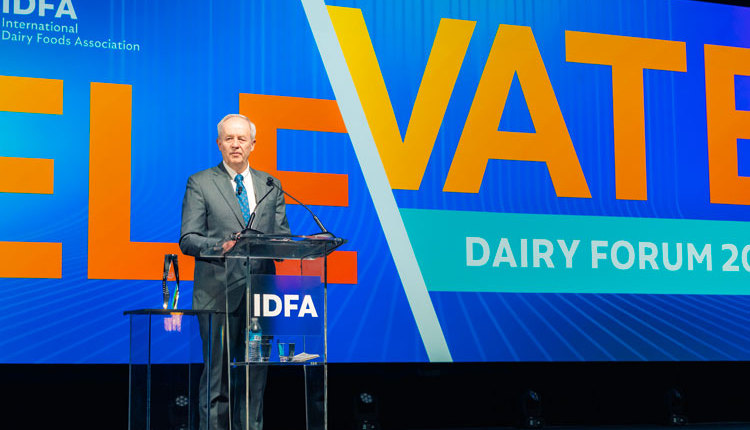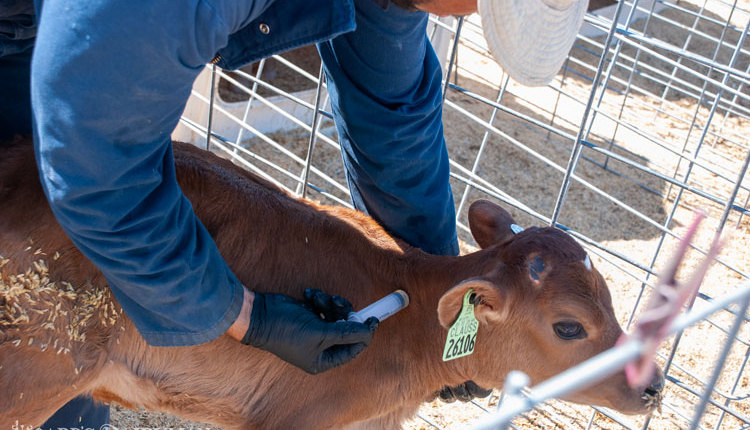When it comes to feed prices and dairy trade, two "C" words have dominated conversations for more than a decade: for ethanol it's corn and for dairy products it's China. Since only one in five of our readers plant soybeans, most of us may not appreciate the new role China now plays in the grain market. Last year, the world's most populous nation bought 25 percent of the U.S. soybean crop. That makes China a major economic driver on dairy farm inputs in the form of protein supplements and on the output side as the leading dairy product purchaser.
China's appetite for soybeans has exploded. Of the 80-plus million acres dedicated to soybeans in the U.S., the yield from nearly 20 million acres was exported to China last year. That represented 25 percent of our production and 33 percent of China's entire imports.
"The U.S. and China are tied at the hip for soybeans," stated John Newton from the University of Illinois. China imported a remarkable 65 percent of total U.S. exports with second-place Mexico at a mere 4.6 percent.
While China's role in soybean markets doesn't quite compare to ethanol's role in corn, it has been closing the gap and both play large roles in fluctuating feed prices. The ethanol mandate, which took root in 2005, has gradually consumed 40 percent of the U.S. corn crop. Over that time, that represented a 400 percent jump in corn headed towards fuel, Newton pointed out.
Soybeans, too, have similar parallels to corn but are driven by China, not ethanol. Crop farmers have planted an additional 8 million acres of corn since 2005 to meet growing biofuel demand. Meanwhile, China's purchases caused row crop farmers to plant 12 million additional acres of soybeans during that same time frame. These two actions led to fewer acres dedicated to hay and other crops necessary to feed livestock, which further drove up feed bills.
While ethanol's role in corn demand may have flat lined at 40 percent, China's appetite for soybeans likely has more upside and we will be exposed to additional price shocks on both the expense and income side of our dairy ledger books. That will hold true even though the U.S. grows 29 percent of the world's soybeans and remains the world's largest producers of cows' milk.
This editorial appears on page 374 of the May 25, 2015 issue of Hoard's Dairyman.
Return to the Hoard's Dairyman feature page.
China's appetite for soybeans has exploded. Of the 80-plus million acres dedicated to soybeans in the U.S., the yield from nearly 20 million acres was exported to China last year. That represented 25 percent of our production and 33 percent of China's entire imports.
"The U.S. and China are tied at the hip for soybeans," stated John Newton from the University of Illinois. China imported a remarkable 65 percent of total U.S. exports with second-place Mexico at a mere 4.6 percent.
While China's role in soybean markets doesn't quite compare to ethanol's role in corn, it has been closing the gap and both play large roles in fluctuating feed prices. The ethanol mandate, which took root in 2005, has gradually consumed 40 percent of the U.S. corn crop. Over that time, that represented a 400 percent jump in corn headed towards fuel, Newton pointed out.
Soybeans, too, have similar parallels to corn but are driven by China, not ethanol. Crop farmers have planted an additional 8 million acres of corn since 2005 to meet growing biofuel demand. Meanwhile, China's purchases caused row crop farmers to plant 12 million additional acres of soybeans during that same time frame. These two actions led to fewer acres dedicated to hay and other crops necessary to feed livestock, which further drove up feed bills.
While ethanol's role in corn demand may have flat lined at 40 percent, China's appetite for soybeans likely has more upside and we will be exposed to additional price shocks on both the expense and income side of our dairy ledger books. That will hold true even though the U.S. grows 29 percent of the world's soybeans and remains the world's largest producers of cows' milk.










